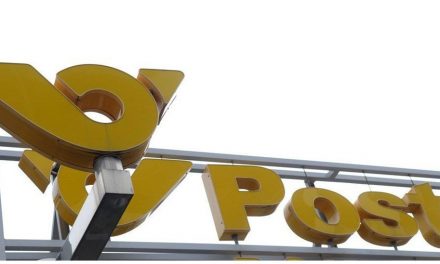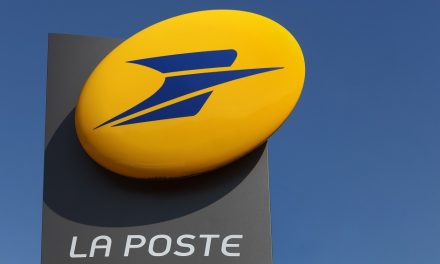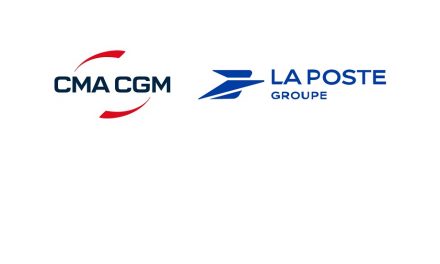
La Poste’s operating profit down 15% for 2009
La Poste reported a 15% drop in operating profit for 2009 as it published its annual financial results. Operating profit was reported at EUR 757m, compared to EUR 866m for 2008. Revenue fell from EUR 20.8bn in 2008 to EUR 20.53bn, a 1.3% drop, whilst EBITDA was up from EUR 1.843bn to EUR 1.867bn. Profit attributable to shareholders stood at EUR 531m – a rise of 0.4% compared to 2008 levels.
Chaired by Jean-Paul Bailly, the meeting of the La Poste Board of Directors approved the group’s consolidated financial statements for the 2009 financial year.
At the meeting, Bailly, the chairman and CEO, stressed: “The diversity of La Poste’s businesses has enabled the group to withstand the financial crisis and the inroads made into its business by electronic exchanges. The fact that La Poste’s revenues and operating profit are only slightly down, and its EBITDA remains unchanged, is testimony of the group’s ability to contain operating costs, while pursuing its policy of investment and improvement in services.”
–Mail and its subsidiaries recorded revenues of EUR 11.6bn, a 4.7% drop at constant scope and exchange rates.
The fall in mail volumes experienced in 2008 accelerated in 2009. Economic volumes of mail (excluding subsidiaries of the Sofipost holding) fell by 5.3%, comprising a 4.5% drop in volumes and a 0.8% negative product mix effect.
This trend was not offset by price revaluations, which had an average positive effect of 1.3%. The structural downward trend of the Mail market was compounded by the financial crisis. All categories of mail (business correspondence, direct marketing and press) were affected by the trend.
However, the quality of the mail service continued to improve: 84.4% of first-class letters were delivered the next-day (D+1), a 0.6 percentage point improvement compared to 2008 and the best performance ever recorded.
–Parcels/Express recorded revenues of EUR 4.48bn, down 3.5% at constant scope and exchange rates.
The financial crisis affected all markets of GeoPost, the express parcel subsidiary of La Poste. GeoPost’s revenues amounted to EUR 3.09bn, a decrease of 4.6% at constant scope and exchange rates. Revenues were hardest hit in Germany, Spain and the UK. In France, where the recession was less pronounced and thanks to a policy of product innovation, Chronopost saw its volumes increase.
Coliposte recorded a fall in traffic (B2C and C2C in France), on account of a reduction in mailorder sales, which was however partially offset by buoyant e-commerce sales, up 16%. Revenues were EUR 1.39bn, a fall of 1.4%. Coliposte’s two-day delivery (D+2) performance was 92.8%, a 0.3 percentage point improvement on 2008.
–La Banque Postale continued to grow: net banking income rose 4%, at constant scope and exchange rates, to EUR 5.02bn.
As expected, following the exceptional circumstances created by interest rates and the financial crisis in 2008, new money collection was down at La Banque Postale, but did however remain positive. The opening up of distribution of the Livret A savings account did not significantly erode La Banque Postale’s customer base. Savings and sight deposits grew at an annual rate of 8.1% to EUR 277.3bn at the end of 2009.
La Banque Postale continued to increase sales of products to customers, and saw sustained growth in the number of active customers, growing to 9.9m at the end of the year.
La Banque Postale posted very good results in property loans; its market share rose to over 8%.
-La Poste Retail outlets have a major role in distributing the group’s core business products, through 17,107 points of contact.
The network of post offices is key to La Banque Postale’s sales of products and services, and accounts for more than 29% of Coliposte’s sales, more than 18% of Mail’s sales and nearly 13% of Chronopost’s sales. In 2009, La Banque Postale took EUR 2.52bn for mail, parcels/express and third products, which was down 2.2% on 2008. This compared with a fall of 3.7% in over-the-counter sales.
La Banque Postale succeeded in greatly reducing the average waiting time in its 1,000 largest post offices, thanks to extensive modernisation and improvement in reception of its customers. It thereby cut waiting time from 6 minutes and 50 seconds, at the end of 2008, to 4 minutes and 30 seconds, at the end of 2009, for the deposit and withdrawal of Mail and Parcels, which accounts for nearly half of its transactions.
Containing costs
Faced with the difficult circumstances that prevailed in 2009, all La Poste Group companies implemented cost saving programmes. The group’s operating expenses totalled EUR 19.77bn, a reduction of EUR 307m and a 1.6% improvement at constant scope and exchange rates compared to 2008.
This trend was due, on the one hand, to group companies tailoring their costs to their businesses, and on the other hand, to the positive effects of savings plans implemented at the end of 2008, and their reinforcement regarding structural and support function costs in 2009.
Change in profitability
In view of these developments, EBITDA was EUR 1.87bn in 2009, stable compared to 2008.
After amortisation, provisions and reduction in the cost of risk, the group’s operating profit amounted to EUR 757m. Operating profit as a percentage of revenues therefore stood at 3.7%, down 0.6 of a percentage point compared to the end of 2008.
Consolidated operating profit of the Mail sector was EUR 179m in 2009.
The economic model of Parcels/Express, based on strong fluctuations in operational means and reinforced by savings plans, performed particularly well. Consolidated operating profit was EUR 324m in 2009, an increase of 3% at constant scope and exchange rates. Operating margin was up 0.5 of a percentage point at constant scope and exchange rates.
As regards La Banque Postale, its banking business accounted for EUR 612m of the group’s operating profit. This was due to the dual effect of a robust rise in its net banking income and its effective management of expenses, linked to the use of La Poste’s resources, resulting in a decrease in operating ratio.
After taking into account the financial result, which included the temporary impact of the revaluation of debt in application of IFRS standards, and the EUR 186m contribution of CNP Assurances (up EUR 56m compared to 2008), net attributable income amounted to EUR 531m. This result enabled La Poste to propose a dividend of EUR 105m, at its annual general meeting.
Financial structure was stable
At the end of 2009, cash provided by operations was EUR 1.395bn, up EUR 40m compared to 2008.
The group made investments of EUR 1.28bn, while slightly reducing its net debt, which however remained high at EUR 5.5bn.
EUR 1.16bn euros of internal investments were made. 18 industrial mail platforms were opened, enabling the new industrial facilities to manage 70% of mail volumes. 600 post offices were EUR 116m were invested in external growth.
At the end of 2009, the La Poste Group thus included:
– within Sofipost (holding company of Mail subsidiaries), Mediapost Hit mail in Romania and Mediapost Spain, comprising five regional companies in Spain carrying out the businesses of direct marketing and advertising,
– within GeoPost, ten new Seur franchises (Spain) and the creation of a joint venture in India,
– within La Banque Postale, the Tocqueville Finance Group in the field of fund management.
Group equity was EUR 4.1bn, thus contributing to the change in the net Debt/Equity ratio, which was 1.35 at the end of 2009, compared to 1.75 at the end of the previous year. Following correction for latent effects with regard to financial instruments, this ratio stood at 1.5, which remained in stark contrast with the other major European postal operators, as did the debt coverage ratio (net Debt/EBITDA), which remained unchanged at 2.96.
Outlook 2010
In 2010, La Poste will continue to modernise and adapt. An increase in capital is planned for the end of the year, which will create new opportunities in an economic situation that remains fragile. Within this context of a weakened economy, La Poste is maintaining its objective of stabilising revenues and maintaining earning power.
The structural fall in Mail volumes should continue, however the Parcels and Express business should progressively regain ground to reach the levels prior to the financial crisis. La Banque Postale will continue to grow.
Overall, contributions from the banking and Parcels/Express businesses should see an upward trend, offsetting the shrinking contribution of Mail, the objective of which is to remain profitable.
The level of investment will remain high, with the group planning to continue its strategy of finding new sources of growth and ensuring continuous improvement in quality of services, within each business activity. These investments will include EUR 360m within the scope of plans to boost the economy.












